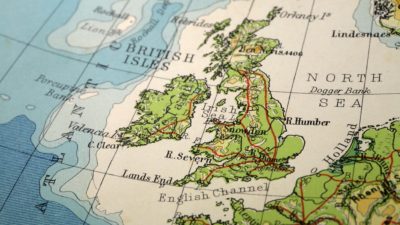Good companies with strong growth can often outperform everybody’s expectations. And these gains aren’t always just the result of higher sales.
One of the hallmarks of high-quality businesses is that they have very effective financial and legal teams. This can result in big benefits, such as lower interest payments on debt or lower tax costs.
FTSE 250 chemical group Victrex (LSE: VCT) is a good example. The company’s shares rose by 8% today after it announced that the group’s effective tax rate will fall from about 21% to around 12% with immediate effect.
Should you invest £1,000 in B&M right now?
When investing expert Mark Rogers has a stock tip, it can pay to listen. After all, the flagship Motley Fool Share Advisor newsletter he has run for nearly a decade has provided thousands of paying members with top stock recommendations from the UK and US markets. And right now, Mark thinks there are 6 standout stocks that investors should consider buying. Want to see if B&M made the list?
The change is the outcome of discussions with HMRC about the UK’s Patent Box legislation. This refers to a set of new laws introduced in 2013, which were designed to encourage companies to commercialise their patents in the UK.
Management expect the reduction in tax liabilities to have “an ongoing favourable impact on earnings per share and cash”. I should think so. I estimate that this reduction would have added about 6% to the group’s profits last year, and around 9% in 2015.
Shareholders should benefit directly from these improvements, as Victrex has no debt and an operating margin of 40%. Extra profits should mean extra cash to fund dividends and growth.
Victrex’s financial year ends on 30 September. So any benefits will be limited for the current year. But based on today’s news, I believe earnings forecasts for 2017/18 are likely to rise by between 5% and 10%.
Taking the mid-point of this range, this would put the company’s shares on a 2018 forecast P/E of 20 after today’s gains, with a prospective yield of about 3%. I suspect that’s a fair price after today’s news.
Profits are flying
Sales and profits at discount retailer B&M European Value Retail (LSE: BME) have tripled since 2012. This strong performance could be set to continue, judging by the latest news from the firm.
B&M recently acquired Heron Food Group, a discount convenience retailer with 251 stores, mostly in the north of England. The group plans to use the Heron stores to develop “a complementary, proven and profitable discount convenience grocery brand”.
I used to live close to a Heron store and shopped there regularly for certain essentials. My view is that the two companies should be a close and logical fit. Most of the Heron stores I know of are well located. Combining this with B&M’s large-scale marketing and product sourcing should be a profitable mix.
B&M recently reported like-for-like growth of 7.3% during the three months to 24 June. That’s a very strong performance when compared to the big three supermarkets, which are struggling to keep LFL growth ahead of inflation.
Heron’s 2016 pre-tax profit of £8.6m would have added 4.7% to B&M’s pre-tax profit last year. I think there’s scope for this contribution to increase in the future. With strong growth continuing at its main stores, I think there’s a good chance B&M’s results will beat expectations over the next couple of years.







